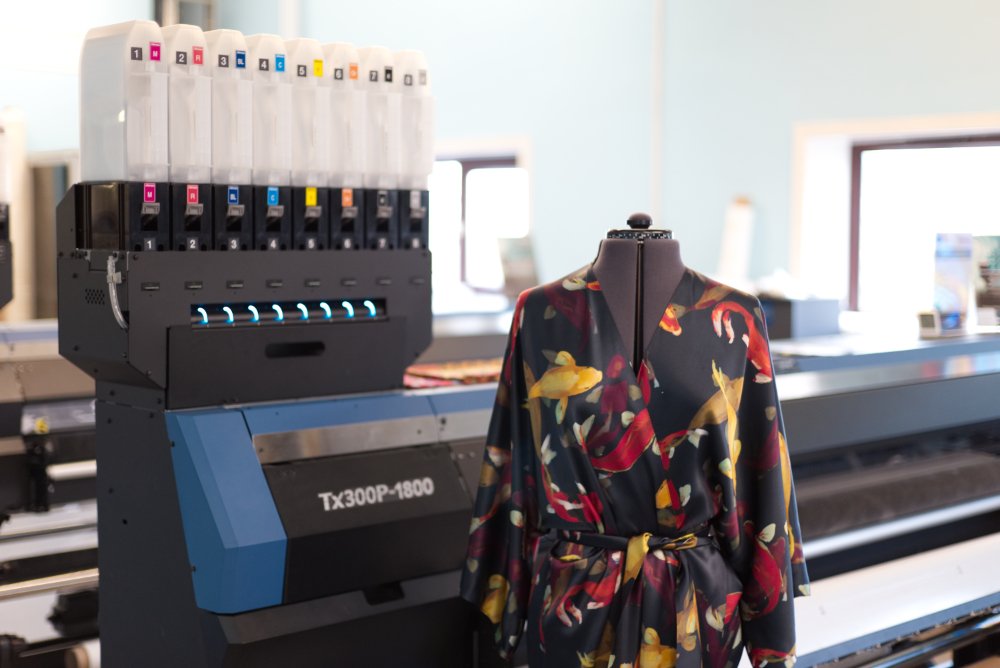Distinguish Dye sublimation textile ink from other textile ink
Disperse inks are the most commonly known type of digital textile inks, and this is what is used in the dye-sublimation ink process. Dispersed inks infuse into and actually dye the fabric, becoming part of the textile itself. Disperse inks are broken down into low-energy, medium-energy and high-energy dispersion. Our commonly used “dye sublimation inks” are actually a low-energy dye dispersion, most typically used for transfer printing from paper to fabric. The sublimation process requires the use of a calendar to deliver heat and pressure. When the ink and carrier is heated to a high temperature (typically around 380-400 degrees F) the carrier evaporates and the dye turns to gas. The synthetic fibers “open” to receive the gas and when they cool, they close and encapsulate the colorant, which then returns to a solid, actually dyeing the material.
Reactive ink contains dyes that create chemical bonds with cellulose when applied to pretreated fabric and then fixated. Reactive inks do best on linen, rayon, nylon and other cellulosic materials. Acid inks require pretreated fabric for fixation and are printed directly to the textile then steamed to set the ink. The dyes that make up acid ink create ionic or electrostatic bonds with textiles such as silk, wool, and nylon. Fabric with reactive and acid ink must be washed after transfer to remove any residue. Reactive and acid-based inks also have to be set into the fabrics with a post-processing heating procedure to permanently set the dyes.
Pigment inks are finely ground powders suspended in liquid carriers with binders. Where sublimation creates permanency when the dye is encapsulated into a polymer, pigments are bonded to natural fabrics using binders and a heat calender process. Digitally printed natural fabrics are in high demand, so this is an area we expect to see significant growth in in coming years. Here is a summary of which inks are best for particular types of fabric:
1. Disperse and sublimation are used on polyester, acetate rayon, poly-Lycra and acrylics and require post treatment heat
2. Reactive dyes are for cotton, linen, rayon, nylon and other cellulosic materials and require pre- and post treatment
3. Acid dyes are best for wool, silk, polyamides, cashmere, angora and nylon and require post treatment
4. Pigment works on cotton and natural fabrics and requires post treatment heat
More info:
Website: www.skyimagepaper.com
Company Name: Fei Yue Digital Technology Co.,LTD
E-mail: sales@feiyuepaper.com
Tel: 86-025-86628894
Whatsapp: +86 18252072197
Address: Central Road 323, Nanjing, Jiangsu, China





评论
发表评论